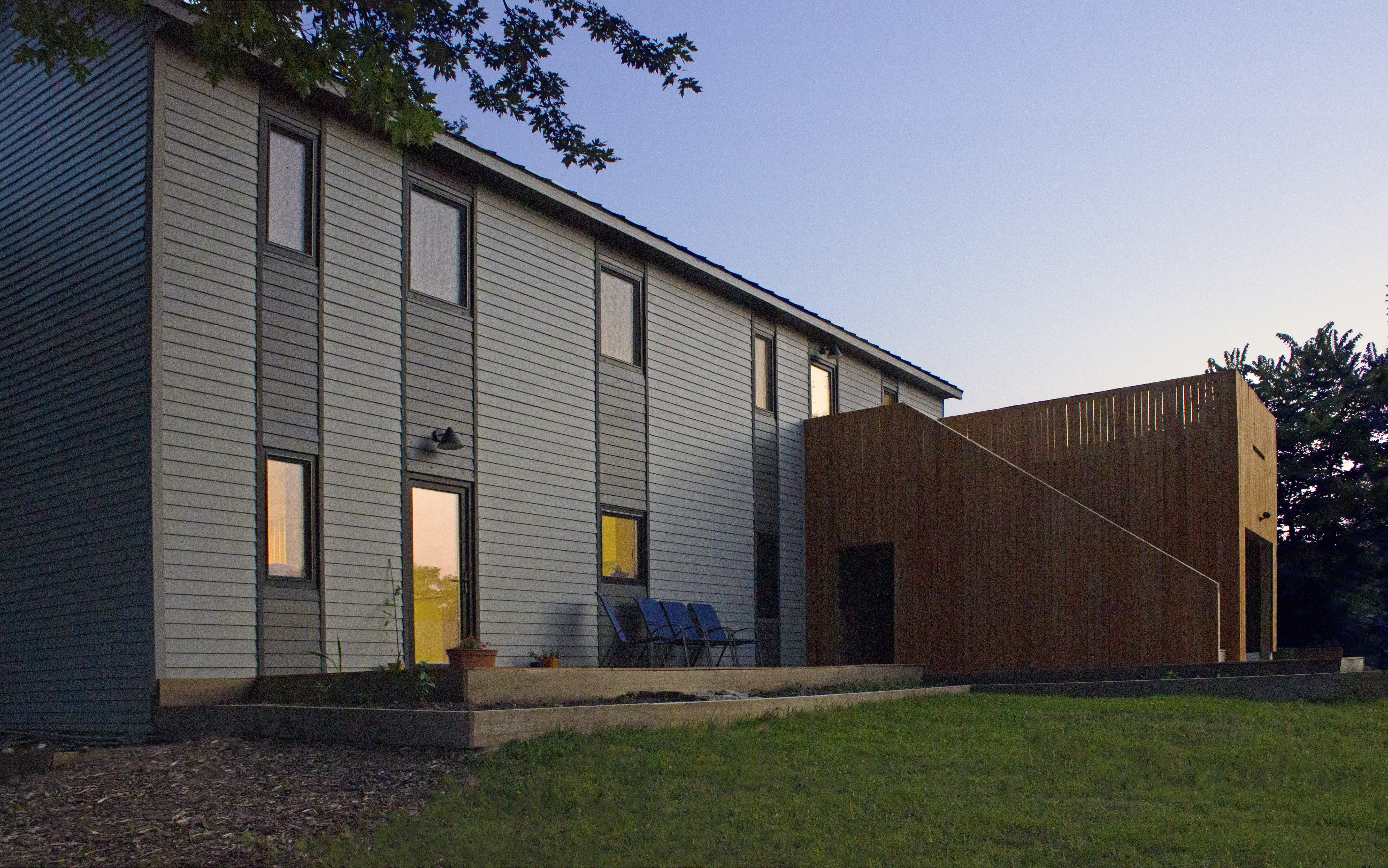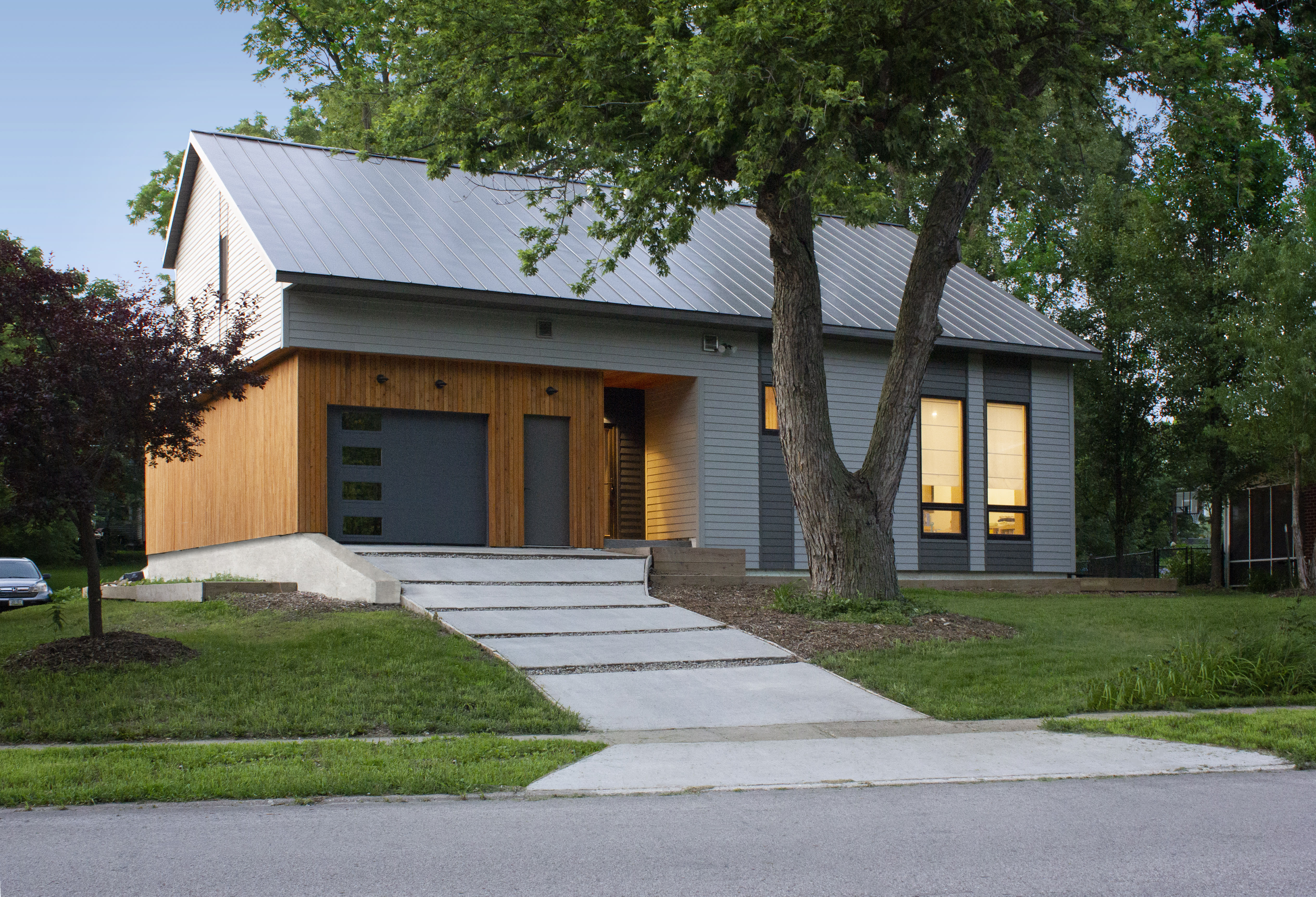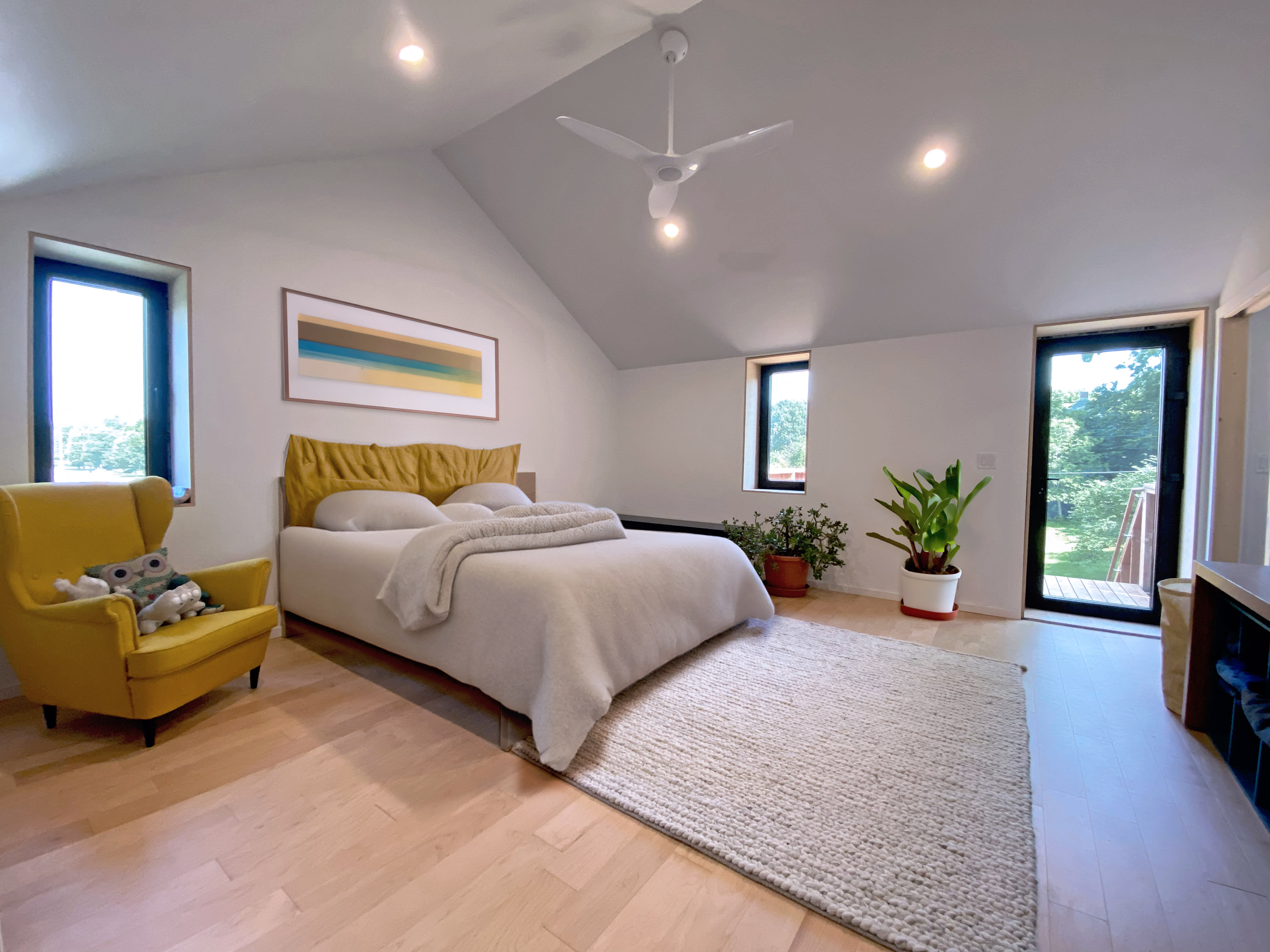The award-winning team at Ohio-based Sol design + consulting uses SketchUp and Sefaira to make crucial design decisions early in the process and deliver valuable sustainability insights to clients.
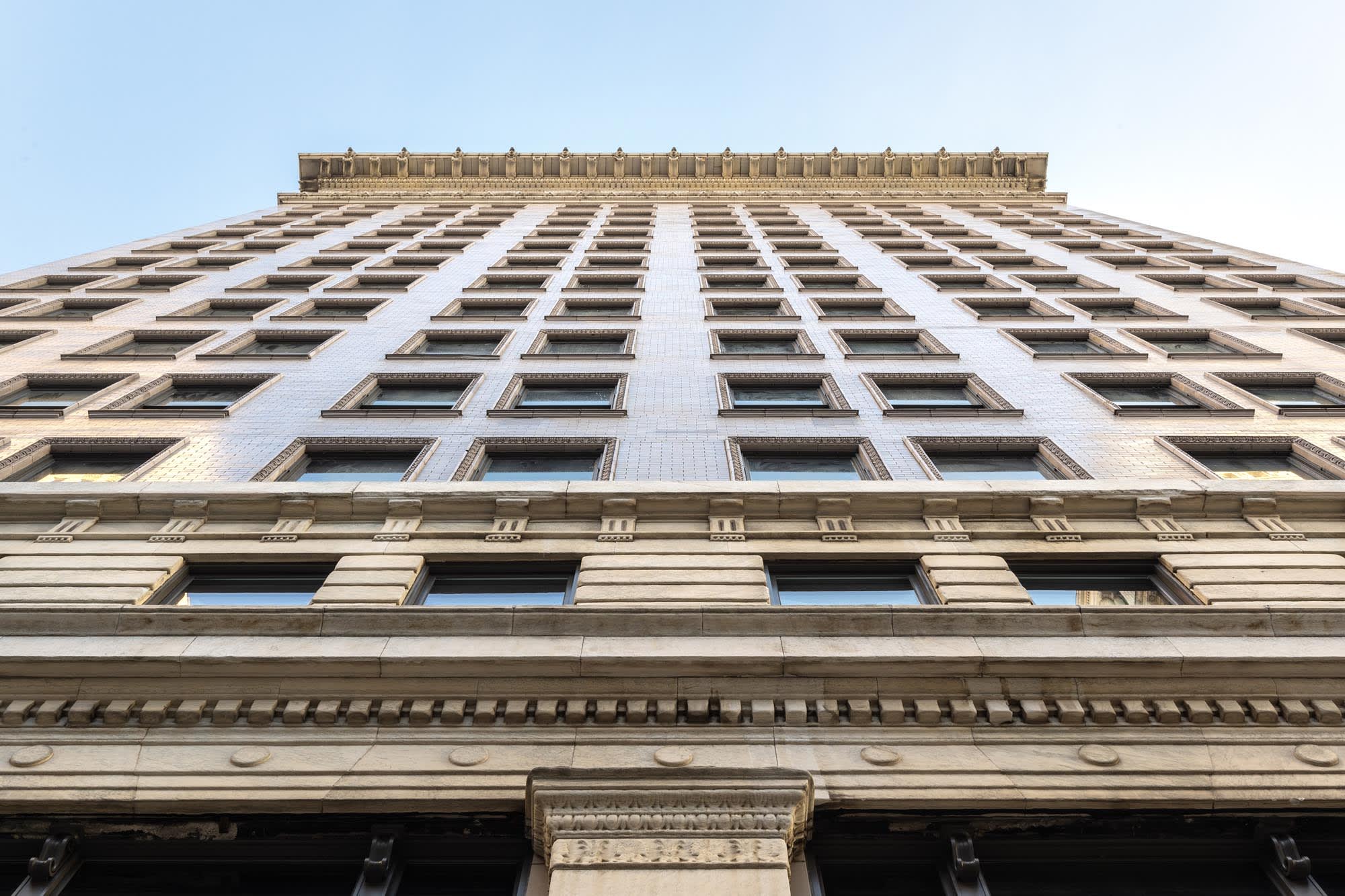
The Ingalls Building, Cincinnati
It’s no secret that sustainability and carbon reduction are increasingly important. Sol Design + Consulting prioritizes human-centric design and is dedicated to advancing sustainability, occupant well-being, and affordability. The Cincinnati-based architecture and sustainability consulting firm specializes in LEED, Enterprise Green Communities, and Passive House (PHIUS+) certifications and projects with high-performance goals.
At the forefront of sustainability + design
Whether serving as an architect or sustainability consultant, Sol has found that early performance analysis is crucial to achieving performance goals in a cost-effective and integrated way. They use energy modeling, daylight analysis, and other analytical tools to inform key design decisions as early as conceptual design.
Translating that approach into action can be challenging from an implementation standpoint. Traditional energy modeling software can be time-consuming and limit the exploration of multiple design options. Most projects do not have the time or budget to dedicate to multiple detailed energy models. At the same time, the Sol team often wants to explore different options to identify the best solution or quantify trade-offs. The following two case studies show how Sol uses Sefaira to overcome these barriers and deliver exceptional performance.
The Ingalls Building project
On the National Register of Historic Places since 1975, Cincinnati’s historic Ingalls Building showcases Sol’s depth of experience as a sustainability consultant and their forward-thinking approach. Sol provided energy modeling and commissioning services for the historic retrofit of the first reinforced concrete skyscraper in the United States, achieving LEED Gold certification.
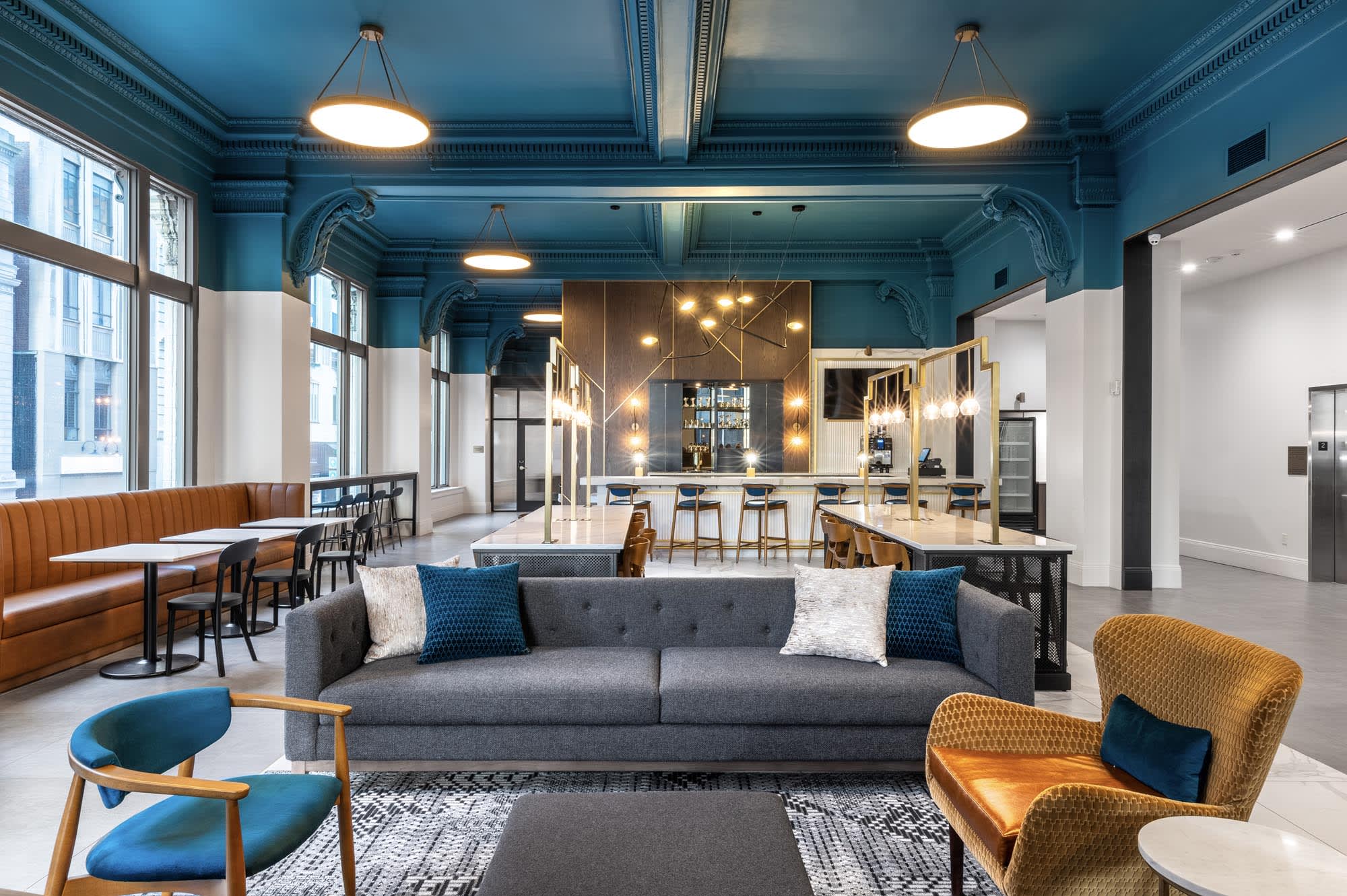
Interior of the Ingalls Building
The scope of the work was to preserve the historic facade, which meant Sol could not make changes like replacing windows, adding external storm windows, or any other visible modifications. Sol conducted an energy and daylight analysis to identify what was feasible for daylighting and most valuable for energy. They considered three important factors for this project:
1. A significant number of LEED points depend on energy performance and daylighting: 21 out of 110 possible points are related to improving energy performance and daylighting.
2. As a designated historic building, Sol could not propose exterior modifications, such as replacing windows or adding external storm windows. Yet, the building still had to be made at least as efficient as a new code-minimum building. Sol needed to identify a path early in the process to achieve this.
3. Although Sol couldn’t modify the exterior, like many historic buildings, it had large windows and was designed with daylighting in mind. Early in the process, the team wanted to determine whether they were close to the LEED threshold for daylighting credits to know whether or not they could count on those points.
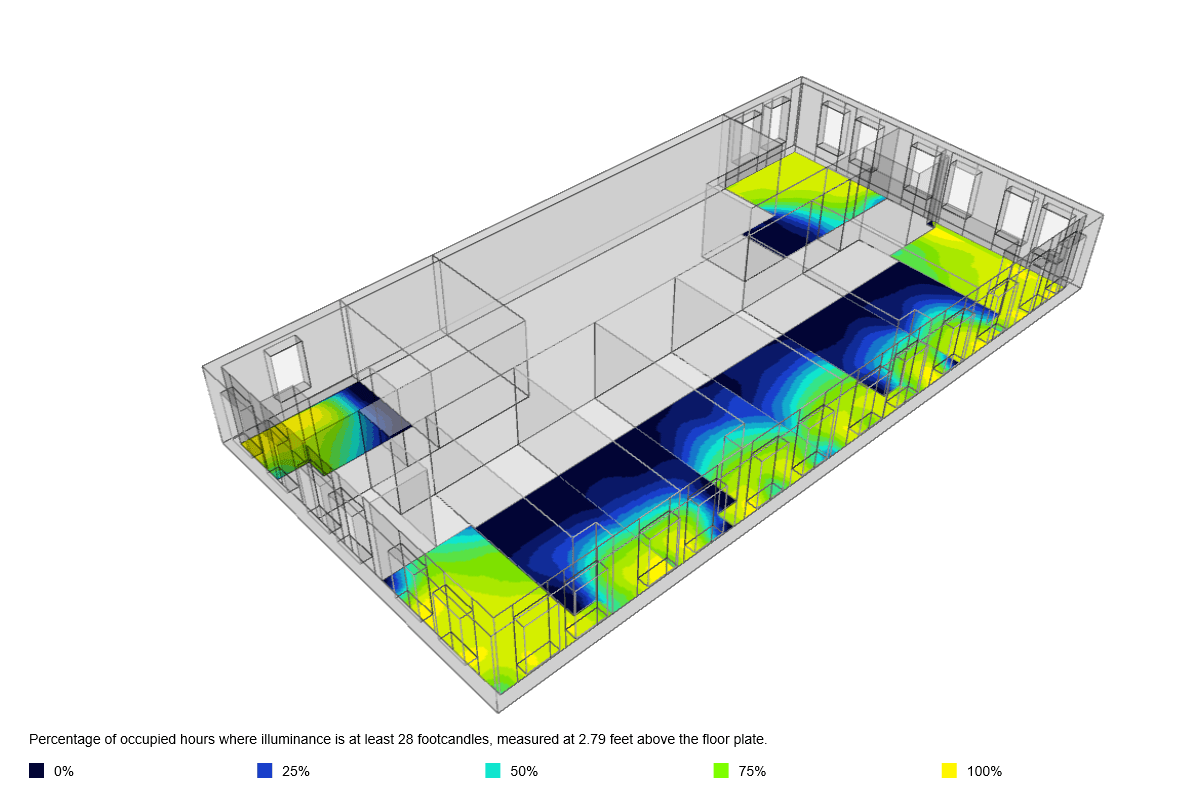
Ingalls Building daylight analysis model in Sefaira
Sol’s Vice President of Design and Sustainability, Carl Sterner, described the project as a labor of love that presented a unique challenge: retrofitting an existing building to attain LEED certification while providing energy savings feedback to the team early in the design phase. The client looked to Sol as the expert on how various energy conservation measures could improve the building’s performance.
Three measures were shown to be important in early analysis and were incorporated into the design: (1) interior storm windows, (2) wall insulation, and (3) 100% LED lighting.
The interior storm windows made the most significant impact on this project. These were not originally considered for the design, but early analysis showed they greatly impacted performance. This was mainly because the existing historic windows were single-paned—essentially big holes in the thermal envelope. Sol worked with the design team to integrate interior storm windows with the design and met historical requirements. The building ultimately achieved a predicted 44% reduction in energy use compared to the LEED Baseline—a remarkable improvement for a historic building.

Ingalls Building energy modeling and integrative process ECM (energy conservation measure) chart – one of many analyses that was conducted for this project
The value of early analysis
Sol credits much of their success with projects like the Ingalls Building to their suite of professional tools. Using Sefaira gave Sol speed unmatched by conventional daylight and energy modeling software. Using SketchUp and Sefaira allowed for quick iterations and analysis earlier in the design process, more informed decision-making, and greater value to clients.
Early analysis with Sefaira and SketchUp allows Sol to quickly test a range of options. With these early analysis capabilities, Sol was able to save time and deliver faster, better feedback to their clients. For example, the team could easily explore variables like the R-value, window types, lighting improvements, and HVAC systems to see what might yield the best energy-saving results in as little as 3-4 hours. This is a significant time savings compared to traditional energy modeling tools, which often take upward of 16 hours.
The main benefit of early analysis for most design projects is the insights that help fundamentally shape the project—informing decisions about building form, facade design, window placement, shading, and envelope.
Performance and Aesthetics
It’s a simple truth but not always embraced: beautiful design and advanced sustainability don’t have to be at odds. Sterner contends that what often makes a well-designed project is its apparent simplicity. At Sol, they achieve this by solving several problems simultaneously with the minimum number of moves.
“Performance is inextricably linked with the design of projects with high sustainability ambitions, like Passive House or Net Zero Energy. You have to think of them together to develop a simple, elegant solution.”
Carl Sterner, Vice President of Design and Sustainability
Sterner cites the Iowa City Nest project as a prime example of early analysis in action. The challenge was to create an efficient, durable Passive House on an infill site. This project provided an interesting challenge for Sol’s architectural design team. The team had to meet stringent Passive House performance requirements and fit the home gracefully into a tight lot — all while meeting the client’s budget and desire for a warm, welcoming contemporary home. Sefaira proved to be a key tool for this exercise in architectural creativity.
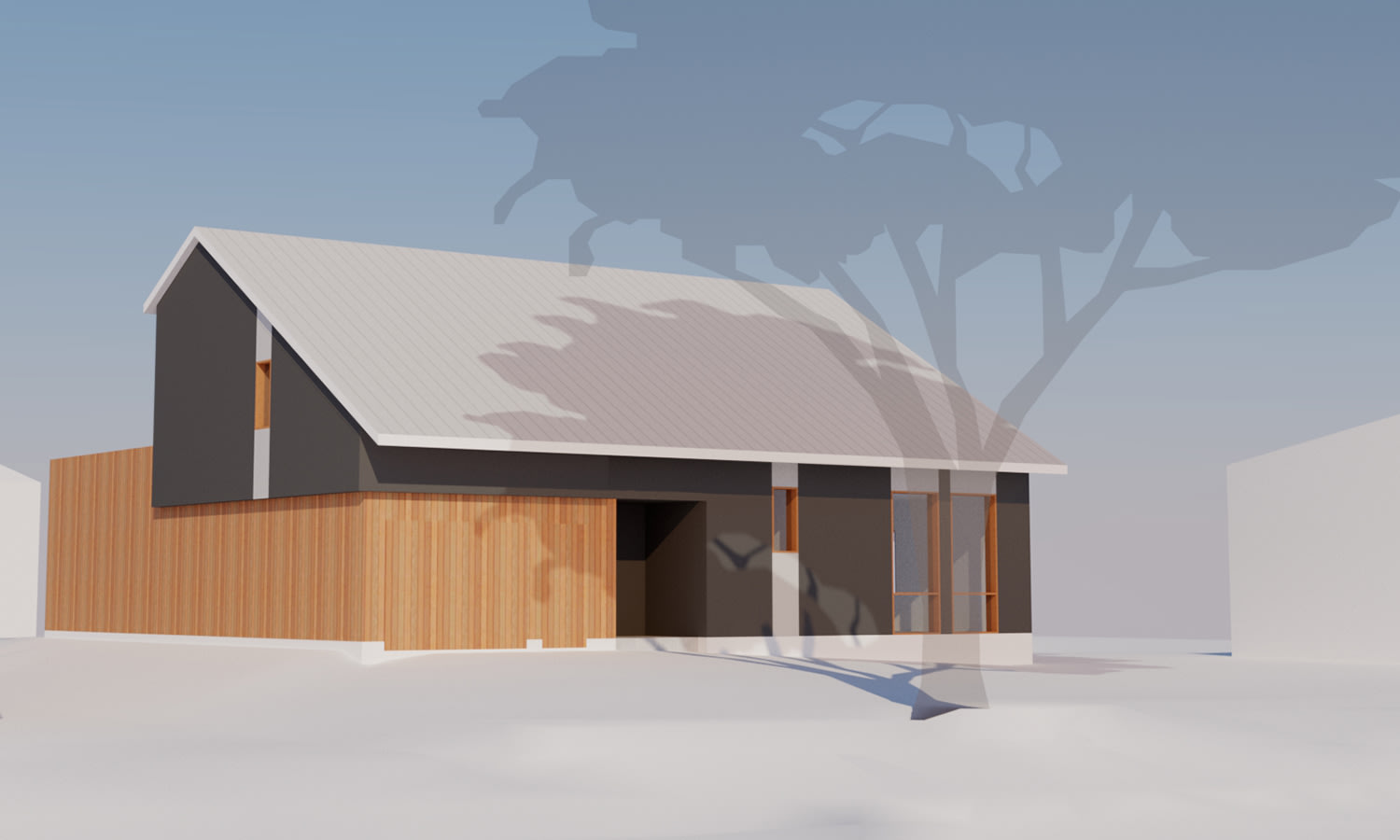
Early design render of the Iowa City Nest Passive House
One of the major design drivers was a new floodplain designation that meant the home’s first floor would be at least two feet taller than its neighbors. The narrow lot meant Sol needed to build two full stories to fit all the necessary spaces. These requirements risked creating a home that seemed to tower over its one-story neighbors. To overcome this creative challenge, the team designed the front of the home to appear as a single-story and stacked the second story to the rear of the house.
This design move resulted in many windows facing north rather than south, a potential performance problem. Sol used early analysis in Sefaira to determine (1) how big a problem this was, (2) what they could improve to meet Passive House requirements, and (3) whether they could reduce the size of the North-facing windows to improve energy performance, but still provide sufficient daylight to the second-floor spaces. The ability to work back and forth between energy and daylighting analysis enabled Sol to design the North facade in a way that balanced energy, daylight, and aesthetic goals simultaneously.
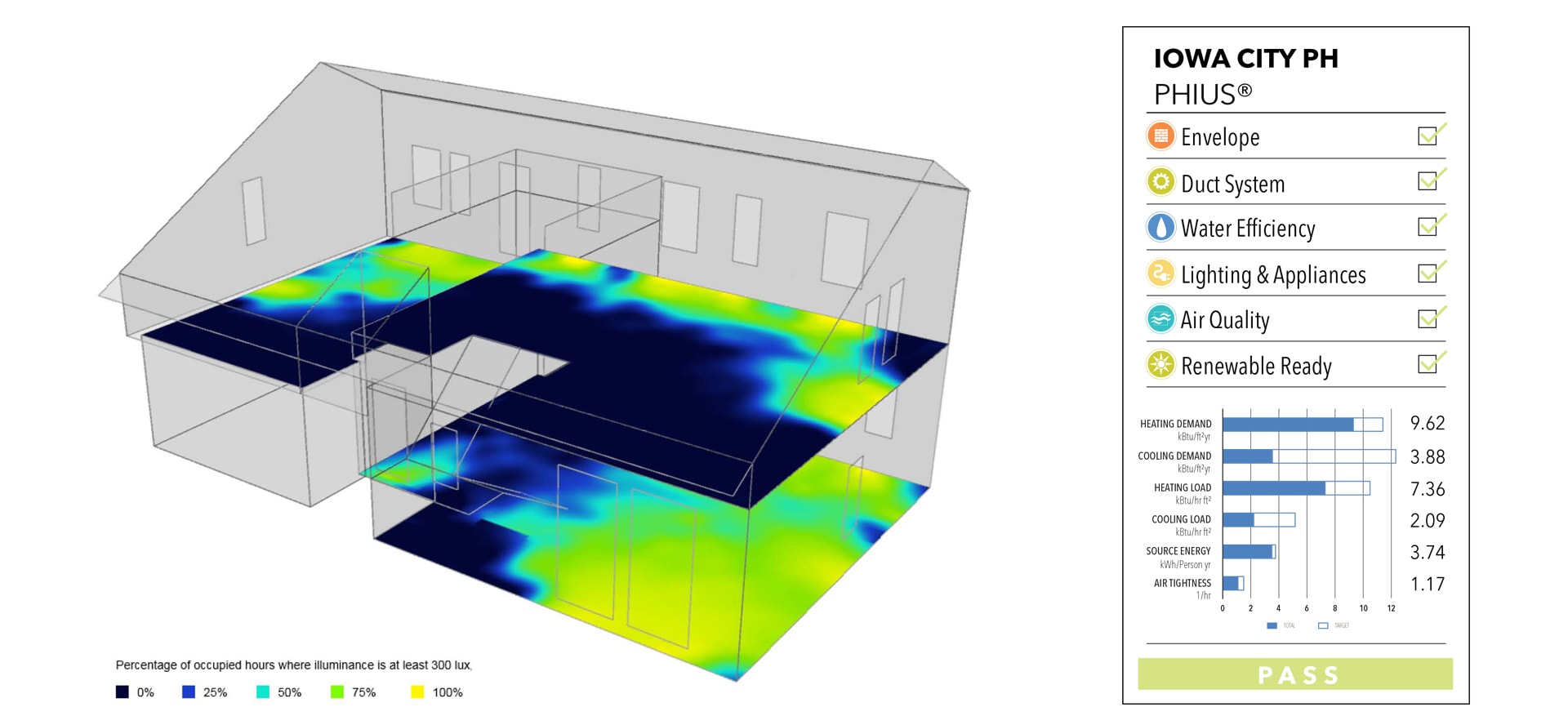
Iowa City Passive House daylight analysis in Sefaira and Passive House energy metrics
“Sefaira let our team understand the implications of shading and facade design early in the process when the design is still malleable. The home needed to meet Passive House metrics, have sufficient daylight, and look aesthetically pleasing. Using Sefaira early on allowed us to look at all these things simultaneously to create a cohesive, integrated design.”
Carl Sterner, Vice President of Design and Sustainability
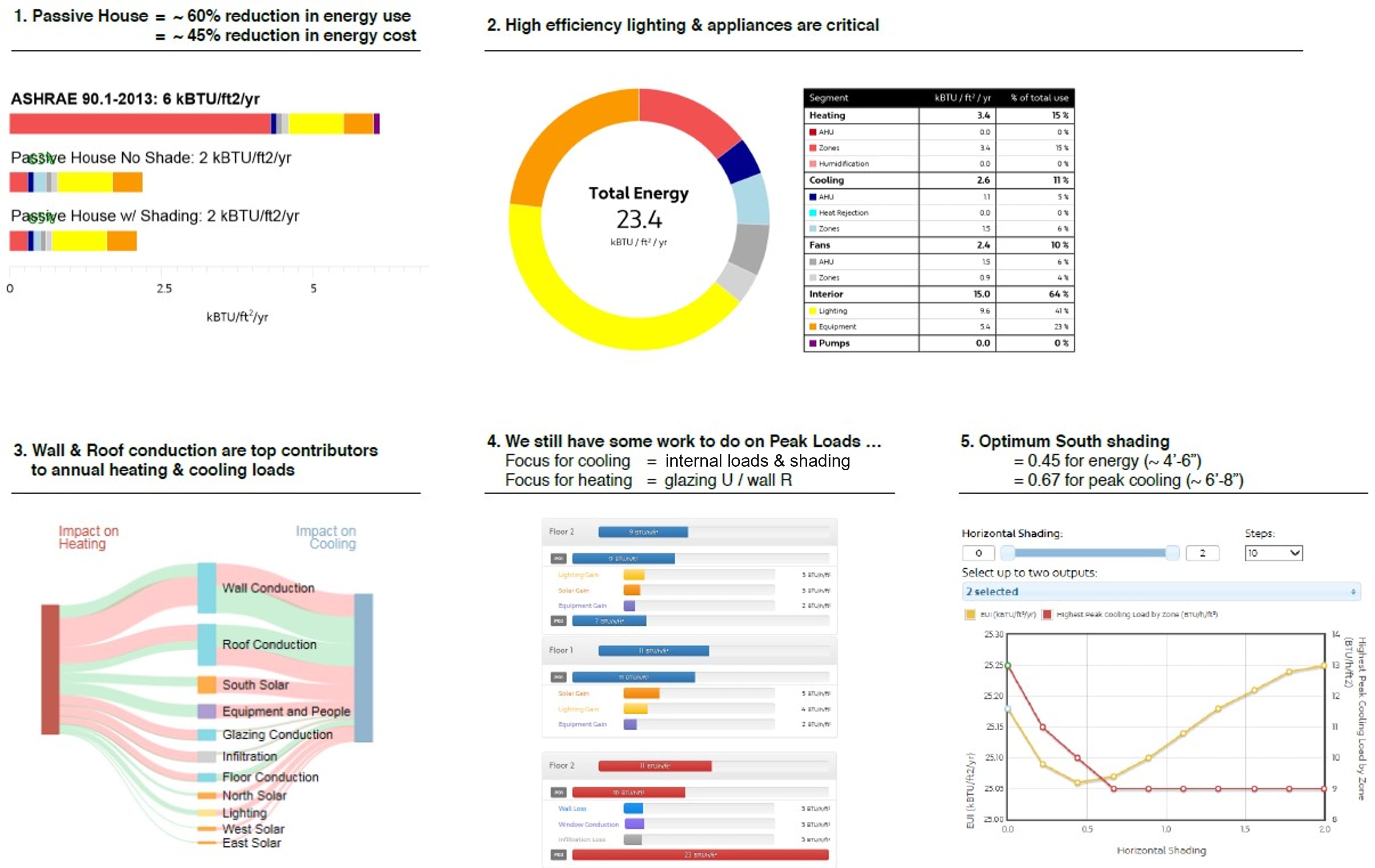
Sefaira energy analysis was used to understand what drove performance outcomes and optimize key elements like window size and shading
Upon completion, the Iowa City Nest was the first certified Passive House in Iowa City and won the 2023 PHIUS Passive Buildings Design Competition.
Iowa City Nest residence exterior and interior
Green building: where beauty meets performance
Sterner believes carbon reduction, energy and water conservation, and excellent indoor environmental quality will become the norm rather than the exception. As energy efficiency in buildings becomes increasingly important, more legislation and incentives will advance climate goals, and building codes will become more stringent to reinforce those outcomes. Today’s decisions will impact not only the planet’s health but also our population’s health.
“To hit our carbon targets and keep climate change in check, we must design better buildings. About 40% of carbon emissions come from buildings, including their heating, cooling, and lighting systems. Reducing that number means not only building super-efficient new buildings but also retrofitting existing buildings. Our experience has shown that, with the right approach, both new and existing buildings can be decarbonized cost-effectively.”
Carl Sterner, Vice President of Design and Sustainability
Source: SketchUp Blog
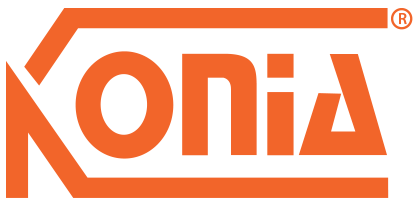

 Tiếng Việt
Tiếng Việt